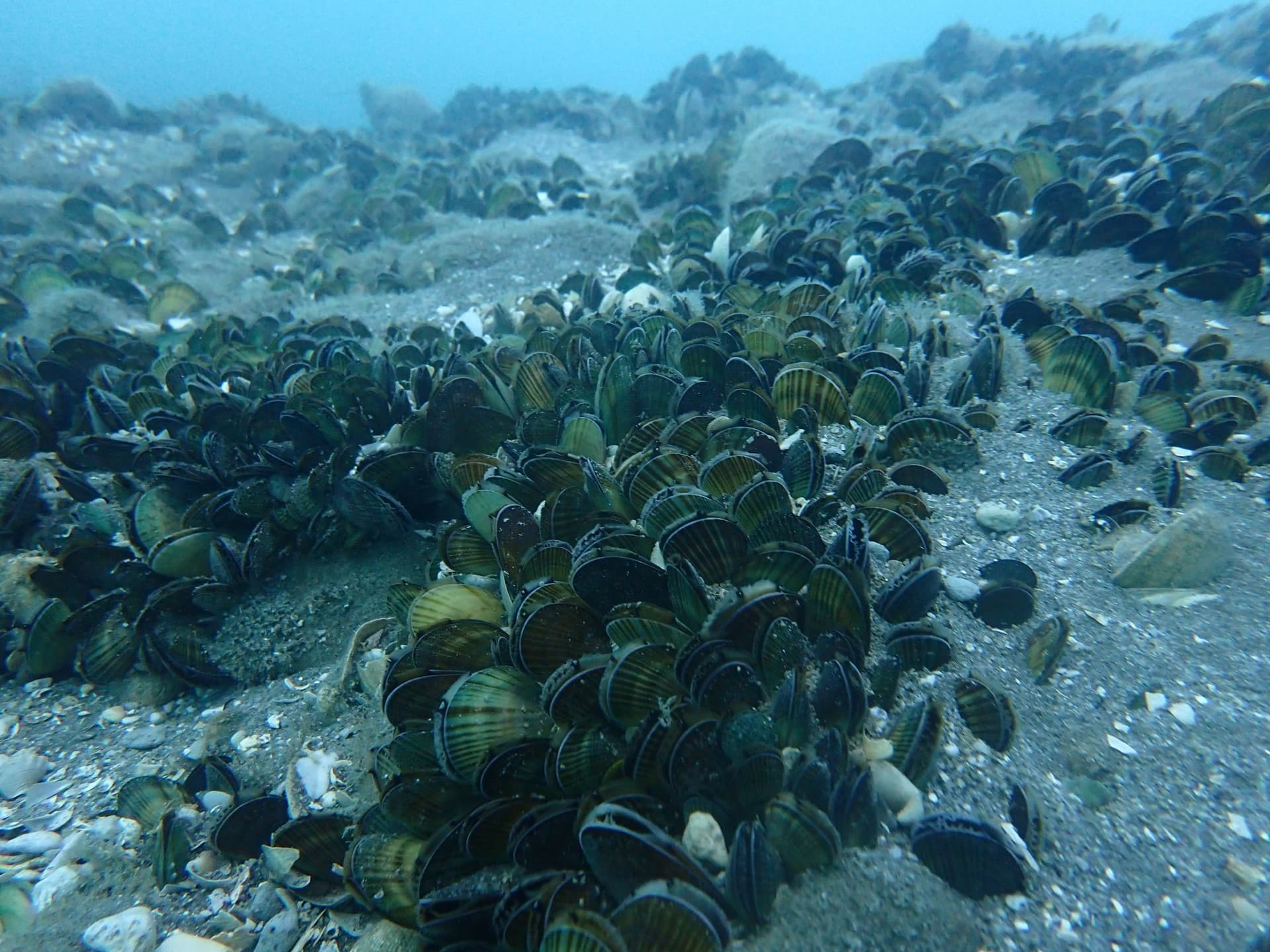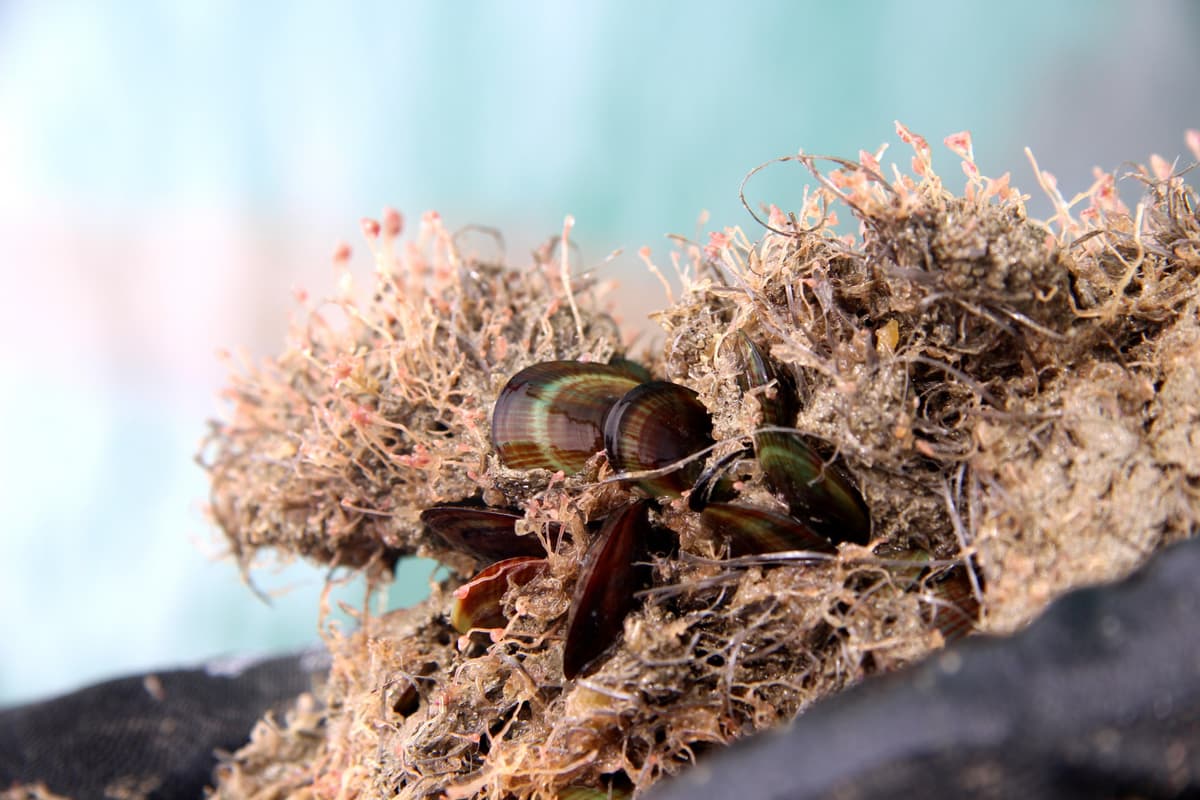

Posted on Wednesday 4 October 2023
Media release
In 2007 there were 116 million kuku (mussels) in Ōhiwa Harbour in the eastern Bay of Plenty, near Whakatane. By 2019 the number of kuku had dropped drastically to under 80,000 left. In 2021 the project increased mussels on the seafloor to 800,000.
The main reason for the kuku decline was an overabundance of predatory pātangaroa (seastars) who were eating the mussels out of existence.
Following several decades of continued collective efforts in a mātauranga-led approach to marine management in the Ōhiwa Harbour, the kuku population finally appears to be bouncing back with a discovery that 16 million kuku are now growing in a traditional Ōhiwa Harbour kuku bed that had previously disappeared.
Kuku are a taonga (treasured) species for the local iwi, and crucial to the health of this ecosystem. Professor in marine science and aquaculture Kura Paul-Burke (Ngāti Whakahemo, Ngāti Awa, Ngāti Pūkeko) along with local iwi and interested kai gatherers have all watched the kuku population deplete – and the pātangaroa population explode – over the last 20 years.
“In 2007, there were 112 million baby kuku in a continuous 2km reef – by 2019 there were less than 80,000 in the entire harbour,” says Kura Paul-Burke.
“Meanwhile, in 2019 we found 50,000 seastars per hectare – you’d expect to see around 15 per hectare in a healthy balanced ecosystem.”
Three of the four kuku beds in the harbour have disappeared in the last 12 years, affecting the harbour’s kaimoana (seafood), mahinga kai (cultivation) and mauri (vital essence), and reducing the ability of mana whenua to express manaakitanga (expression of respect and hospitality to visitors through provision of kaimoana).
Kura Paul-Burke first began working with iwi and hapu in 2007 to take a mātauranga-led approach to restoring the kuku population in Ōhiwa Harbour. She began by working with local kaumātua and the mātauranga they shared around where the traditional mussel bed boundaries in the harbour were.
The Sustainable Seas National Science Challenge became involved in 2020 with support for the research project Awhi Mai Awhi Atu; Enacting a kaitiakitanga-based approach to EBM, led by Kura Paul-Burke, and co-developed with the hapū/iwi of Ōhiwa harbour. The project has been supported by the Bay of Plenty Regional Council and the seven partners of the co-management Ōhiwa Harbour Implementation Forum.
This project has arisen from the issues, challenges, actions, and aspirations of Māori and is grounded in Whanaungatanga, the principle of working in meaningful, genuine collaboration to influence how mātauranga Māori and science principles and practices are translated operationally in ways that recognise cultural values, knowledge systems and opportunities.
As part of the project, restoration stations containing mussel spat were co-developed with iwi and located in the harbour using tikanga based on mātauranga Māori.
As Kura Paul-Burke progressed with the project, it became apparent the pollution from the plastic spat lines used to regenerate the kuku were not aligned with Māori cultural values and intergenerational legacy. Instead tohunga weavers helped create natural fibre spat lines from locally growing ti kouka leaves that had the strength to support the kuku spat clusters to grow as a whanau, with the natural spat lines biodegrading over time. As the kuku grew into teenagers and the spat lines fell to the seafloor, the kuku would land as a whanau, and continue to grow and regenerate on the seafloor as a whanau.
In July 2023, on a chance maintenance dive of the kuku restoration stations, Kura Paul-Burke’s team made the incredible discovery that one of the traditional mussel beds has bounced back to 16 million ‘teenage’ kuku. This exciting and hopeful discovery shows that a mātauranga-led restoration approach, used alongside marine science, has managed to restore kuku numbers and reverse the decline. Kura Paul-Burke is already helping to empower others to take a mātauranga-led approach to restoring their shellfish populations across the motu.
The kuku restoration project in Ōhiwa Harbour will be continued, with support from the research project co-development partners.
